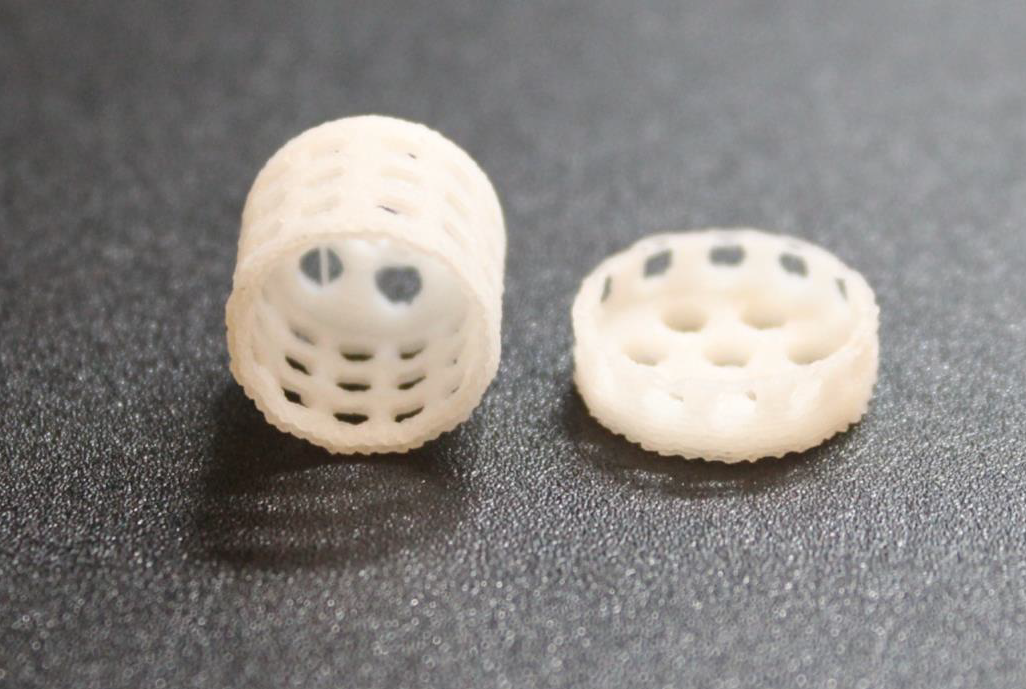Researchers at Weill Cornell Medicine have created a technique to assist surgeons in reconstructing more natural-looking nipples for patients who have had breast reconstruction after mastectomy to treat breast cancer.
 Photo of 3D-printed P4HB empty scaffold for nipple reconstruction. Image Credit: Spector lab
Photo of 3D-printed P4HB empty scaffold for nipple reconstruction. Image Credit: Spector lab
Dr. Jason Spector, Professor of surgery (plastic surgery) at Weill Cornell Medicine and Chief of the Division of Plastic and Reconstructive Surgery at Weill Cornell Medicine and NewYork-Presbyterian/Weill Cornell Medical Center, and his co-workers describe the development of a nipple reconstruction technique using a 3D-printed scaffold made of a polymer extensively used in surgical devices.
The research was published on March 8th, 2023, in the Journal of Plastic and Reconstructive Surgery.
Then, in a preclinical model, researchers revealed that the dissolvable scaffold and the body’s healing processes generate nipples that feel and look real and retain long-lasting projection, unlike previous reconstruction methods.
We've developed a new approach to engineering nipples for breast reconstruction that we think will have a very positive impact on the lives of patients who've suffered through the effects of breast cancer and mastectomy.
Dr. Jason Spector, Professor, Surgery (Plastic Surgery), Weill Cornell Medicine
Rebuilding the nipple is frequently the final step in breast reconstruction following a mastectomy, but it is also one of the most complicated. In a small percentage of cases, surgeons may be able to save the patient’s nipple, but in most cases, a nipple must be recreated from skin tissue.
Presently, surgeons use a different technique to reconstruct a nipple using skin flaps from the patient. Healing processes, on the other hand, frequently cause the reconstructed nipple to flatten over time, and it may become entirely flat in a year or two. According to Dr. Spector, the outcome can be very disappointing for patients.
Fillers used in facial surgeries have been used by surgeons to try to keep the nipple shape longer, but the fillers break down and disappear over time. Researchers also experimented with cartilage and other stiff materials, which do not feel as natural. Dr. Spector and his colleagues set out to create a better alternative.
Dr. Spector collaborated with Tepha, Inc., which manufactures a polymer known as Poly-4-Hydroxybutyrate (P4HB), which is already extensively used in surgical meshes and other medical devices. Dr. Xue Dong, a postdoctoral associate in Dr. Spector’s lab, led the team in 3-D printing the polymer into a scaffold that replicated the size and shape of a nipple.
Using an animal model, they demonstrated that the scaffold degrades over time, and the body’s natural healing process re-fills the space with fatty and vascular tissues typical of a nipple.
The best tissue engineer is the body itself. If you create the right conditions and use the right scaffold in the right size, the body itself will engineer the tissue.
Dr. Jason Spector, Professor, Surgery (Plastic Surgery), Weill Cornell Medicine
A series of biomechanical measurements affirmed that the recreated nipple had biomechanical properties comparable to the real thing. In a second study, they are fine-tuning their technique in the hopes of reducing the time required for the scaffold to dissolve from 6 months to 3 months.
Dr. Spector believes that if they are successful, the device could be available very quickly for women undergoing mastectomy since the material is already safe and extensively used in humans and can go through a simplified process for US Food and Drug Administration clearance.
This is an important step in helping patients who choose to have breast reconstruction after mastectomy feel whole again.
Dr. Jason Spector, Professor, Surgery (Plastic Surgery), Weill Cornell Medicine
Journal Reference:
Xue, D., et al. (2023) Long-term Maintenance of Projection of Nipples Reconstructed Using 3D-printed Poly-4-Hydroxybutyrate (P4HB) Bioabsorbable Scaffolds. Plastic and Reconstructive Surgery. doi.org/10.1097/PRS.0000000000010384.